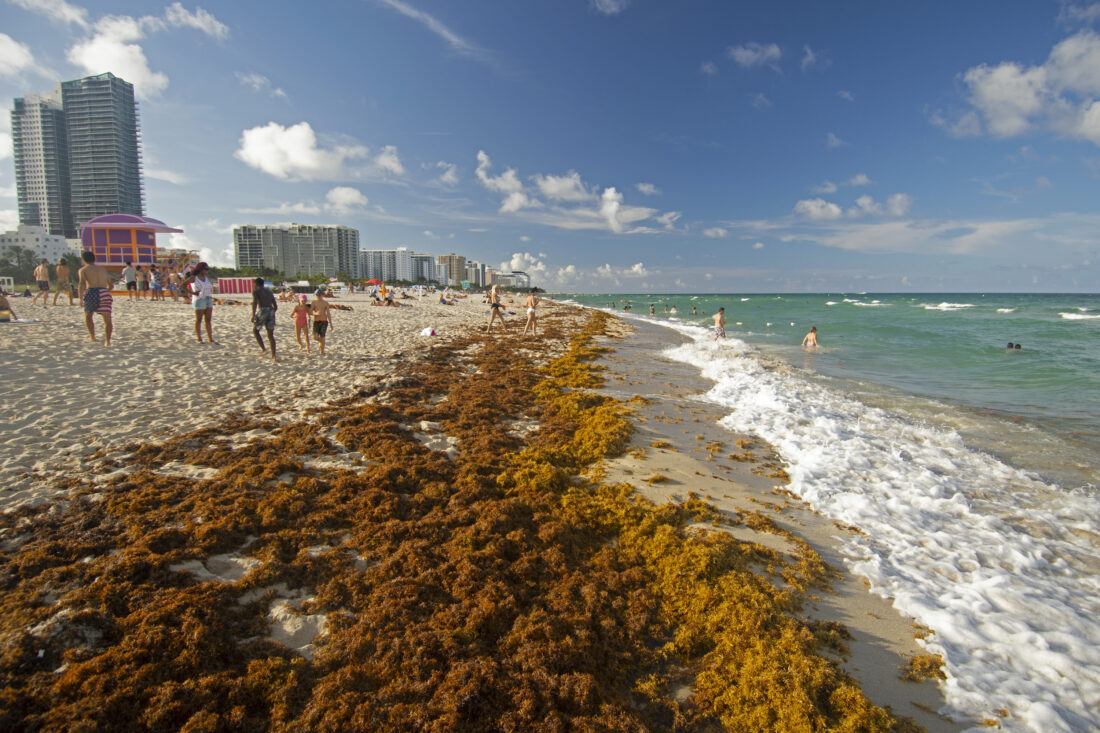The Great Atlantic Sargassum Belt is the largest seaweed bloom in the world, a two million-square-nautical-mile habitat in the Sargasso Sea—a region of the Atlantic Ocean bounded by four currents. It’s made headlines this year as a menace to beach communities on the Southern Atlantic coast, but it’s also a critical ecosystem. The dense algae provides shelter and food to sea birds, whales, crabs, and shrimp along with more than 120 species of fish, including forty-three threatened or endangered species. Baby sea turtles use it as a much-needed resting point and hide out among its fronds. For endangered eels, who migrate to the area to spawn, it’s a floating nursery. But recently it’s become too much of a good thing.

For the past decade, the free-floating mass of brown seaweed has been washing ashore each April through July in increasing size, sending coastal cleanup crews into damage control mode to mitigate mountains of decomposing algae, which emit a rotten-egg smell. But even with a decade of experience dealing with the so-called “blob,” this year’s bloom has scientists especially concerned.
According to NASA satellite imagery, the 2023 sargassum bloom is the largest ever recorded: 5,000 miles long, 300 miles wide, and 13 million tons.
“This is a big, big issue,” says Stephen Leatherman, director of Florida International University’s Laboratory for Coastal Research. What exactly is causing the problem? Leatherman’s research points to pollution. “Phosphates and nitrates are running off farmland, and all this stuff flows into the rivers, and then the rivers pour out to sea, particularly off Brazil,” he says. From there, the offshore current picks up the chemical stew—largely from fertilizers—and sends it off into the Sargasso Sea, where it feeds the tropical sargassum bloom, allowing it to explode in size.
It’s not just an aesthetics problem for beachgoers, however. The very animals that thrive in the Sargassum Seaweed Belt are at risk when it gets too large. “In some cases it’s three to five feet thick in the water,” Leatherman explains. “Sea turtles sometimes can get under it but can’t get out, and since they have to have air within thirty minutes, it can cause them to suffocate.” The blob is equally dire for manatees. Its thickness blocks out light, killing the sea grasses they feed on and in turn killing coral reefs, another important habitat that needs sunlight to survive.
Short of an emergency environmental summit with Brazil, Leatherman says there’s not much we can do. On the ground, however, some counties have found sustainable solutions. Florida’s Broward County uses beach rakers to scoop up the sargassum, then transports it to a county park where it is dried, composted, and shared with residents. But it’s a costly undertaking. Last year Miami-Dade County, which uses a similar process, cleared 18,000 cubic yards to the tune of $3.9 million. This year costs are estimated to reach $6 million.
The good news, at least for tourists: Even though we’re seeing an unprecedented bloom, it’s going to hit the coast in phases, and that means it won’t land on every shore at once. “And if it does land on your favorite beach, there are lots of other things to do,” Leatherman says. “Go see the Everglades. Go golfing. Or find a swimming pool.”








